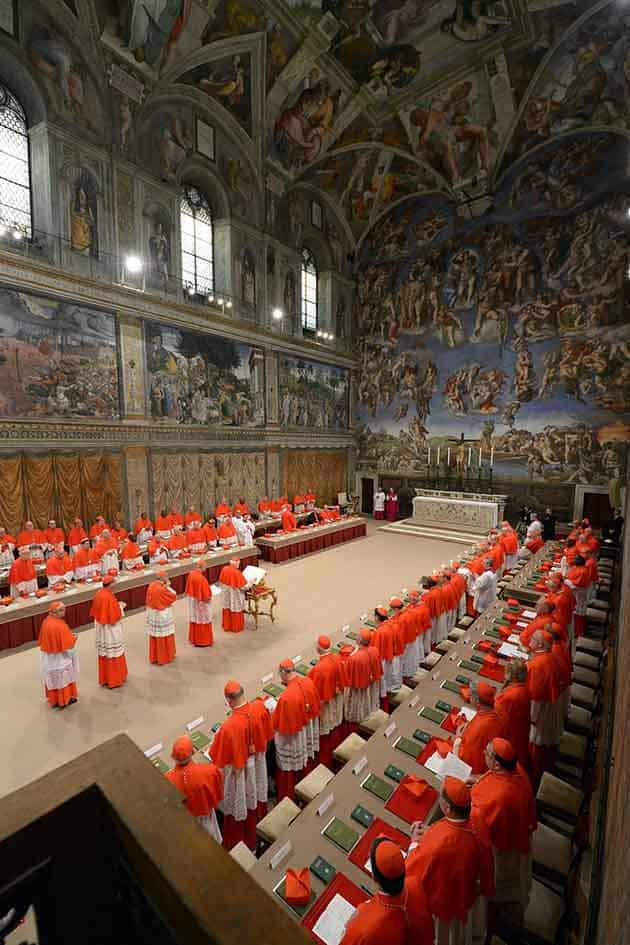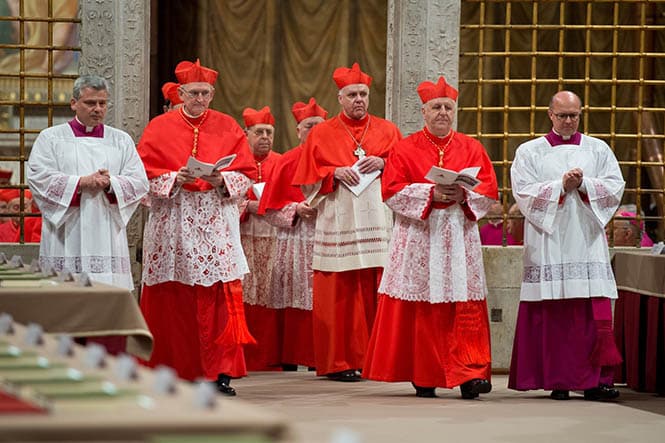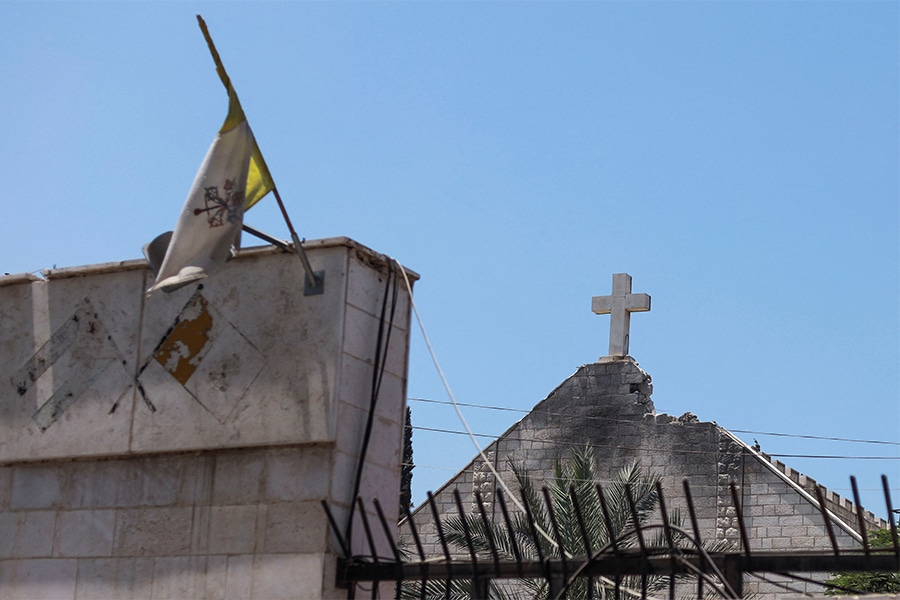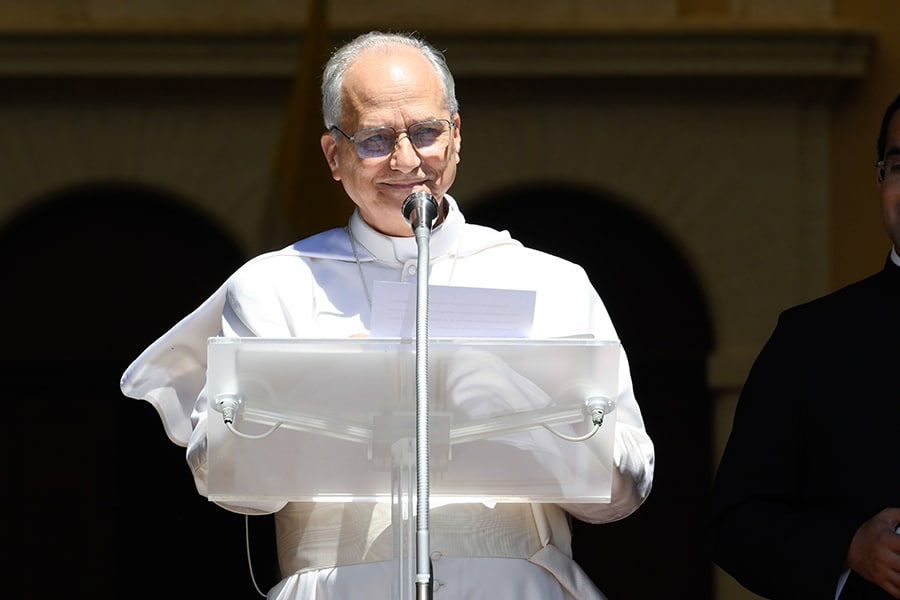Thousands gather in St. Peter’s Square, waiting for the sign that a new pope has been elected. All watch as the dark wisps of smoke ascending from the Sistine Chapel turn to white, and a cheer arises that will encircle the globe. The new earthly leader of the Roman Catholic Church has been chosen.
That will soon be the scene, when the world’s cardinals under the age of 80 gather to elect the successor of Pope Francis, who died April 21 from a stroke and heart failure. The conclave is scheduled to begin May 7.

Following are answers to some commonly asked questions.
- Who can become pope?
One of the cardinals from the College of Cardinals usually is elevated to the office of pope, but any male in good standing with the church could be elected. If he is not a bishop, he must first be ordained. A layman could be chosen. The election of a heretic or a schismatic, however, is forbidden.
- Who chooses the pope?
The college of electors of the supreme pontiff is composed of the cardinals of the Roman Catholic Church, excluding those 80 or older. At the time of the pope’s death, 135 of the church’s 252 cardinals were eligible to vote. At least one cardinal has declined to attend, citing health issues. During the time of a papal election, active campaigning is forbidden and debate is frowned on. The cardinals are to rely on the guidance of the Holy Spirit.
- How soon after a pope’s death or resignation is the new pope elected?
At least 15 days after the death of the pope and not more than 20, the cardinals meet in the morning to celebrate the Eucharist. They proceed that afternoon to the Sistine Chapel, where deliberation and voting take place. The cardinals have selected May 7 as the date for the next conclave to begin.
- Who governs the church until a pope is elected?
During the vacancy of the Apostolic See, the chief figure is the cardinal camerlengo (the Chamberlain of the Holy Roman Church), currently Cardinal Kevin J. Farrell, an Irish-born American and former bishop of Dallas. The camerlengo works with the College of Cardinals in taking care of ordinary church business and emergency matters, but his priority is the election of a new pope. Until then, no one person is the ruling authority for the church. Upon the death of a pope, the cardinals and archbishops who head departments of the Roman Curia cease to exercise their offices. A handful of officials, in particular the camerlengo, continue their functions, submitting to the College of Cardinals matters that would have been referred to the supreme pontiff.
- What is the conclave?
The conclave, from the Latin words for “with” and “key,” refers to the enclosed meeting of cardinals to elect the pope. Pope Gregory X initiated the practice of locking the doors in 1274 both to prevent outside influences and to hasten the process. The conclave is traditionally held in the Sistine Chapel.
While the electors used to stay in makeshift sleeping quarters around the chapel, they now stay at the Domus Sanctae Marthae (St. Martha’s House), a guest facility for dignitaries and others visiting in the Vatican State, and the place where Pope Francis made his permanent residence.
One of the best-known traditions is the burning of ballots. If the smoke that rises from the Sistine Chapel is black (made so by the addition of chemicals and, in earlier days, damp straw), no pope has been chosen. When the smoke is white, the church rejoices for its new pontiff.
- How is the pope chosen?
The pope is chosen by secret ballot. During the election, the cardinals are forbidden to communicate with the outside world “whether by writing, by telephone or by any other means of communication.” Before beginning, the cardinals take a solemn oath of secrecy. Then the Master of Papal Liturgical Celebrations orders all those not taking part in the conclave to leave the Sistine Chapel.
- What does the voting process look like?
Before the voting begins, several cardinals are chosen by lot to gather the ballots of the sick who cannot attend the regular voting session; others are chosen to “scrutinize” the counting of the ballots. Voting begins with one ballot on the first day. In the following days, if needed, two ballots are held in the morning and two in the afternoon.
The rectangular ballot paper has the words “Eligo in Summum Pontificem” (“I Elect As Supreme Pontiff”) on the upper half and space to write the name of the candidate on the lower half. Cardinals are asked to write the name of the person they choose, then fold the ballot twice. The cardinals carry their ballots to the altar and say aloud: “I call as my witness Christ the Lord who will be my judge, that my vote is given to the one who before God I think should be elected.” They then place the ballot into the receptacle, bow and return to their place.
After all the ballots have been placed in the ballot box, they are immediately counted. Each ballot is pierced with a needle through the word “Eligo” and placed on a thread. After the names have been read out loud, the ends of the thread are tied in a knot. If someone has obtained two-thirds of the votes, the canonically valid election of the Roman pontiff has taken place.
Twice a day, after the ballots have been checked, and before the cardinal electors leave the Sistine Chapel, all the ballots are to be burned, along with any notes a cardinal may have written.
If no pope has been elected by a two-thirds majority after three days, voting is suspended for one day of prayer, discussion and spiritual exhortation. After a series of seven further ballots, the process may again be halted for reflection, until finally only the two cardinals who received the most votes in the last ballot are eligible in a runoff election. The two candidates, however, do not themselves have the right to vote.
- Can someone “campaign” to become pope?
No. Although there is always speculation as to who might become pope, the choice is often a surprise. In 1958, for instance, few expected someone as old as Pope St. John XXIII, age 77, to be elevated. (Pope Francis, elected in 2013, was 76.)
- Can a man refuse to accept the office of the papacy?
Yes, although it is unlikely. Rumor has it that some individuals have declined the office, but because the events of the conclave are secret, no one knows for certain if this has occurred.
- When does the new pope assume office?
Upon acceptance of the office, the new pope states the name by which he will be known, and the cardinals pledge their allegiance to him. Tradition holds that the pope then greets the faithful by appearing in his new robes of office. Three sets of vestments — in small, medium and large — are prepared ahead of time to accommodate the dimensions of the new pope. From the moment of his election, the pope assumes responsibility for governing the church.
Read More Vatican News
Copyright © 2025 OSV News








